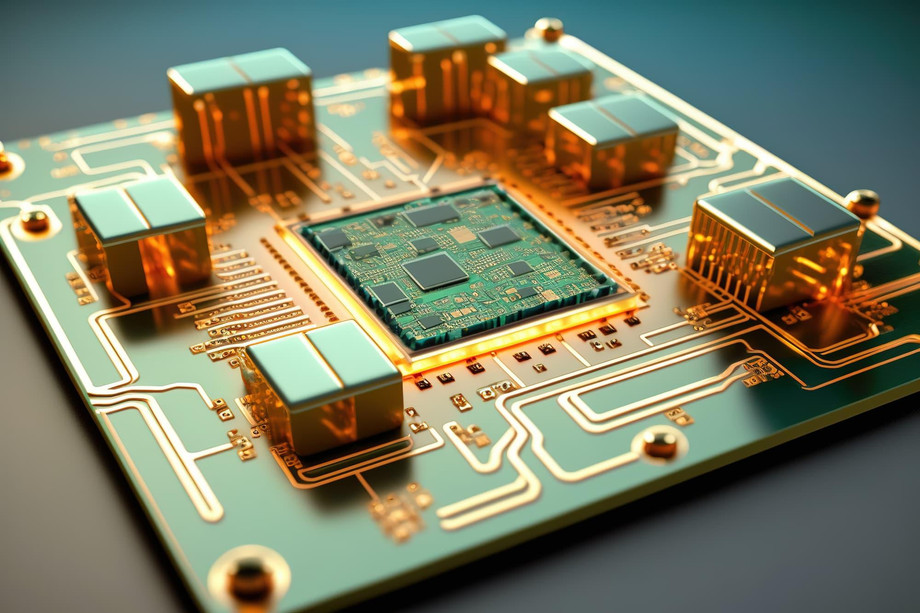The modern power grid is undergoing a significant transformation, evolving from a centralized, one-way system into a decentralized, two-way network known as the smart grid. This intelligent infrastructure relies heavily on embedded hardware solutions to collect data, optimize energy distribution, and enhance overall grid reliability.
In this blog, we'll delve into the world of embedded hardware solutions for smart grids, exploring key design patterns and real-world examples that illustrate their critical role in building a more efficient and sustainable energy ecosystem.
Embedded Systems Design Patterns for Smart Grids
Embedded systems design patterns offer a structured approach for developing reliable and efficient hardware solutions. Here are some prominent patterns utilized in smart grid applications:
- Sensor-Actuator Pattern: This fundamental pattern forms the backbone of smart grid data acquisition and control. Sensors collect data on grid parameters like voltage, current, and power consumption. This data is then processed by a central controller, which sends commands to actuators to optimize energy flow or trigger corrective actions in case of anomalies. For instance, smart meters employing this pattern enable real-time monitoring of energy usage in homes and businesses.
- State Machine Pattern: This pattern ensures well-defined system behavior by managing different operational states. In smart grid applications, state machines can be used to control the operation of substations, power transformers, and other critical infrastructure. For example, a state machine might manage the transition of a substation from normal operation to maintenance mode, ensuring all safety protocols are followed.
- Task Scheduling Pattern: With multiple tasks running concurrently in a smart grid system, efficient scheduling is crucial. The task scheduling pattern prioritizes and allocates processing resources to ensure real-time data processing and timely decision-making. This pattern plays a vital role in managing critical events like load shedding or fault detection on the grid.
Embedded Systems Examples in Smart Grids
Embedded hardware solutions find application across various levels of the smart grid, from generation to consumption. Let's explore some real-world examples:
- Smart Meters: These advanced meters replace traditional ones, providing two-way communication between consumers and utilities. Embedded controllers within smart meters collect data on real-time energy usage, enabling time-of-use pricing models and empowering consumers to make informed energy-saving choices.
- Smart Sensors: Embedded systems are integrated into various sensors deployed across the grid. These sensors collect data on environmental conditions, equipment health, and power quality fluctuations. This data is vital for predictive maintenance, preventing equipment failures and improving grid reliability.
- Distributed Generation (DG) Systems: Embedded controllers manage renewable energy sources like solar panels and wind turbines. They optimize energy production based on real-time demand, enabling seamless integration of renewable sources into the smart grid.
- Communication Modules: Reliable communication is essential for data exchange across the smart grid. Embedded systems power communication modules that enable secure and efficient data transfer between various grid devices and central control systems. This real-time communication allows for better grid management and faster response times to grid disturbances.
Benefits of Utilizing Embedded Hardware Solutions in Smart Grids
The integration of embedded hardware solutions offers a multitude of benefits for smart grids, including:
- Improved Efficiency: Real-time data collection and analysis allow for optimized energy distribution, minimizing energy losses and maximizing grid efficiency.
- Enhanced Reliability: Predictive maintenance based on sensor data helps prevent equipment failures, leading to a more reliable and resilient grid infrastructure.
- Increased Customer Engagement: Smart meters empower consumers with real-time energy usage data, enabling them to make informed choices and participate in demand response programs.
- Integration of Renewables: Embedded systems facilitate the seamless integration of renewable energy sources into the grid, contributing to a cleaner and more sustainable energy ecosystem.
- Cost Reduction: Improved efficiency translates to reduced energy losses and lower operational costs for utilities. Additionally, predictive maintenance minimizes costly equipment failures.
Challenges and Considerations for Embedded Hardware in Smart Grids
While embedded hardware solutions offer significant benefits, some challenges need to be addressed:
- Security: With increased communication within the grid, robust cybersecurity measures are critical to protect against cyberattacks that could disrupt grid operations.
- Interoperability: Standardizing communication protocols and data formats is essential for seamless integration of diverse hardware solutions from different vendors.
- Power Management: Embedded systems within the grid must operate reliably with minimal power consumption, especially for remote or low-power applications.
- Cost-Effectiveness: Finding the right balance between functionality and cost is crucial for widespread adoption of embedded hardware solutions across the grid.
Conclusion
Embedded hardware solutions play a pivotal role in transforming the traditional grid into a smart and efficient energy ecosystem. Utilizing established design patterns and implementing them in real-world applications paves the way for a more reliable, sustainable, and future-proof power grid. By addressing existing challenges and continuously innovating, embedded hardware solutions will continue to be the driving force behind the smart grid revolution.
To Know More About Embedded hardware solutions

